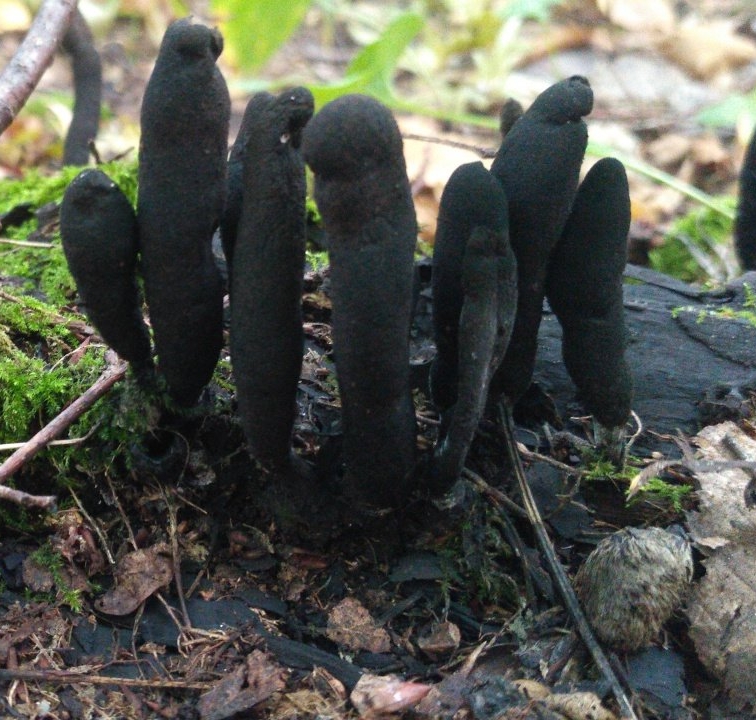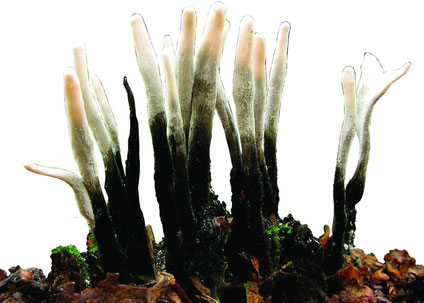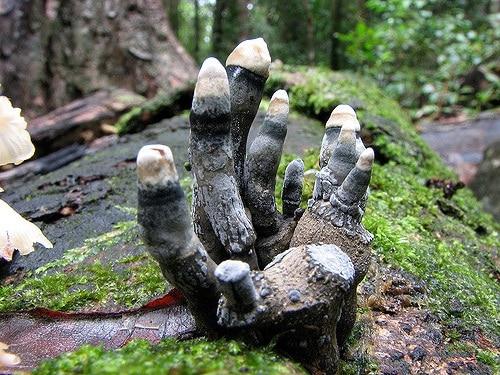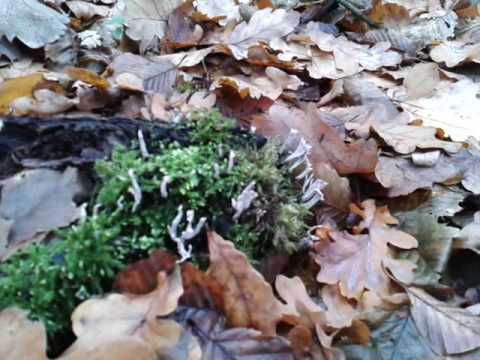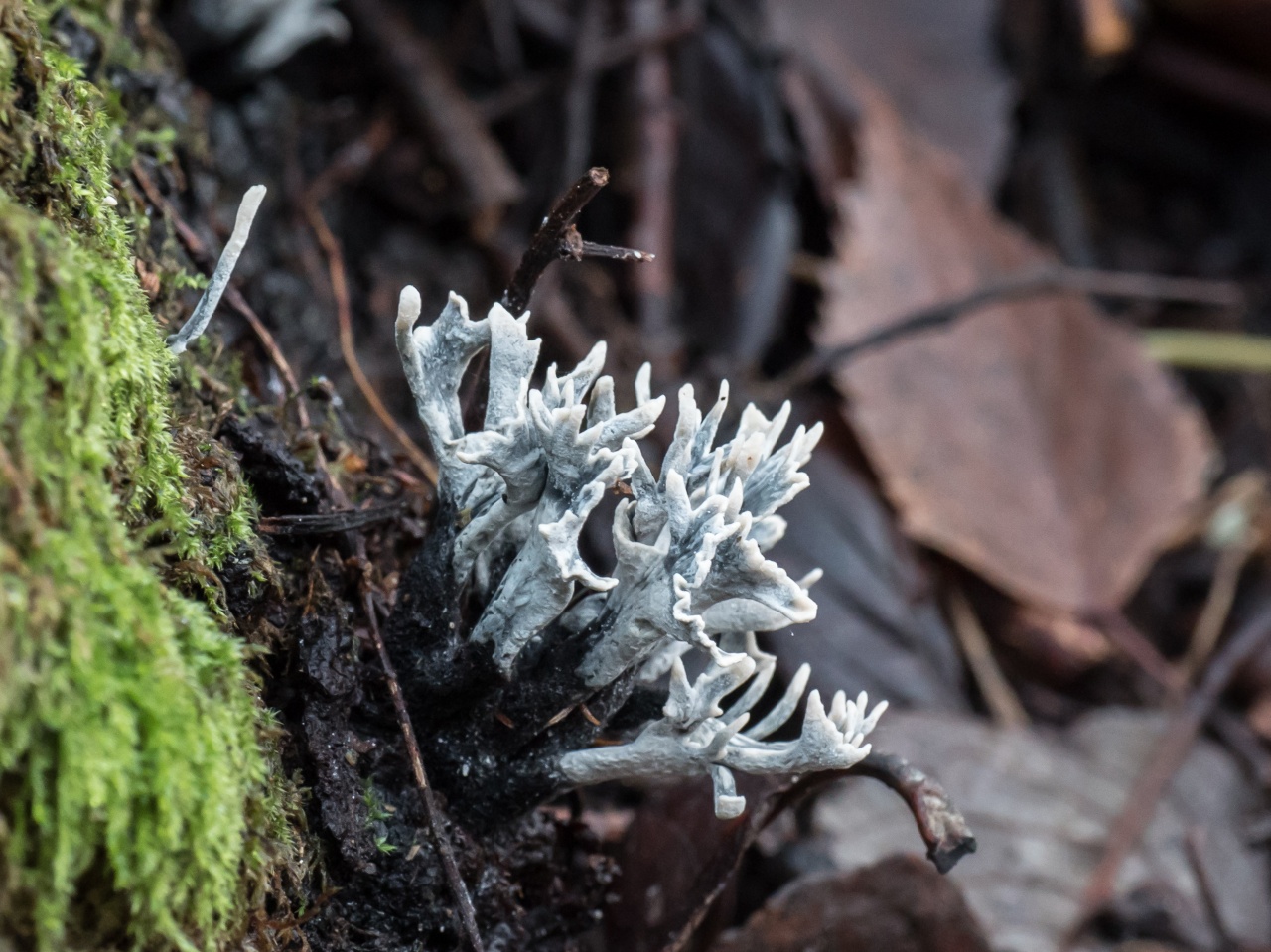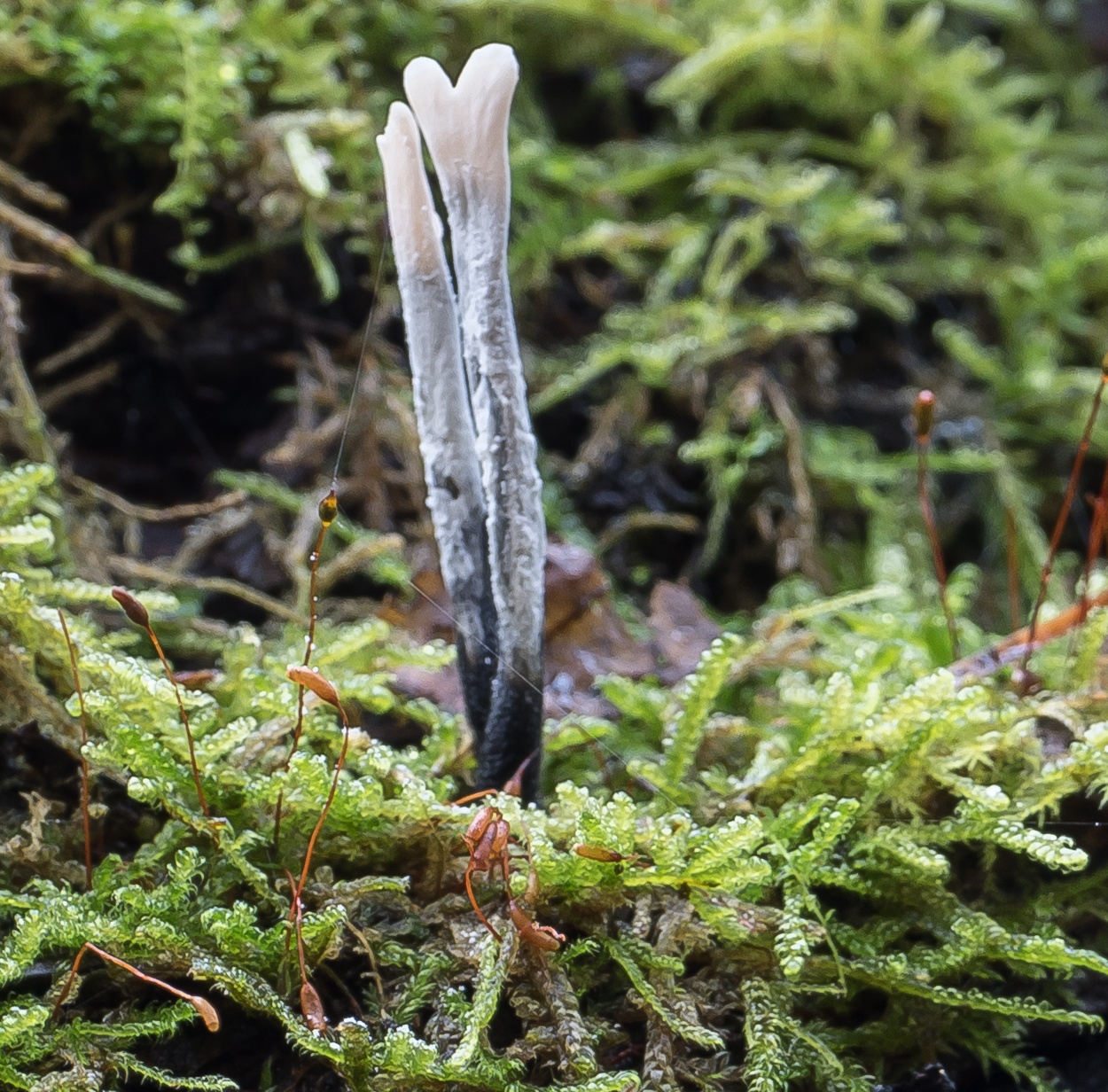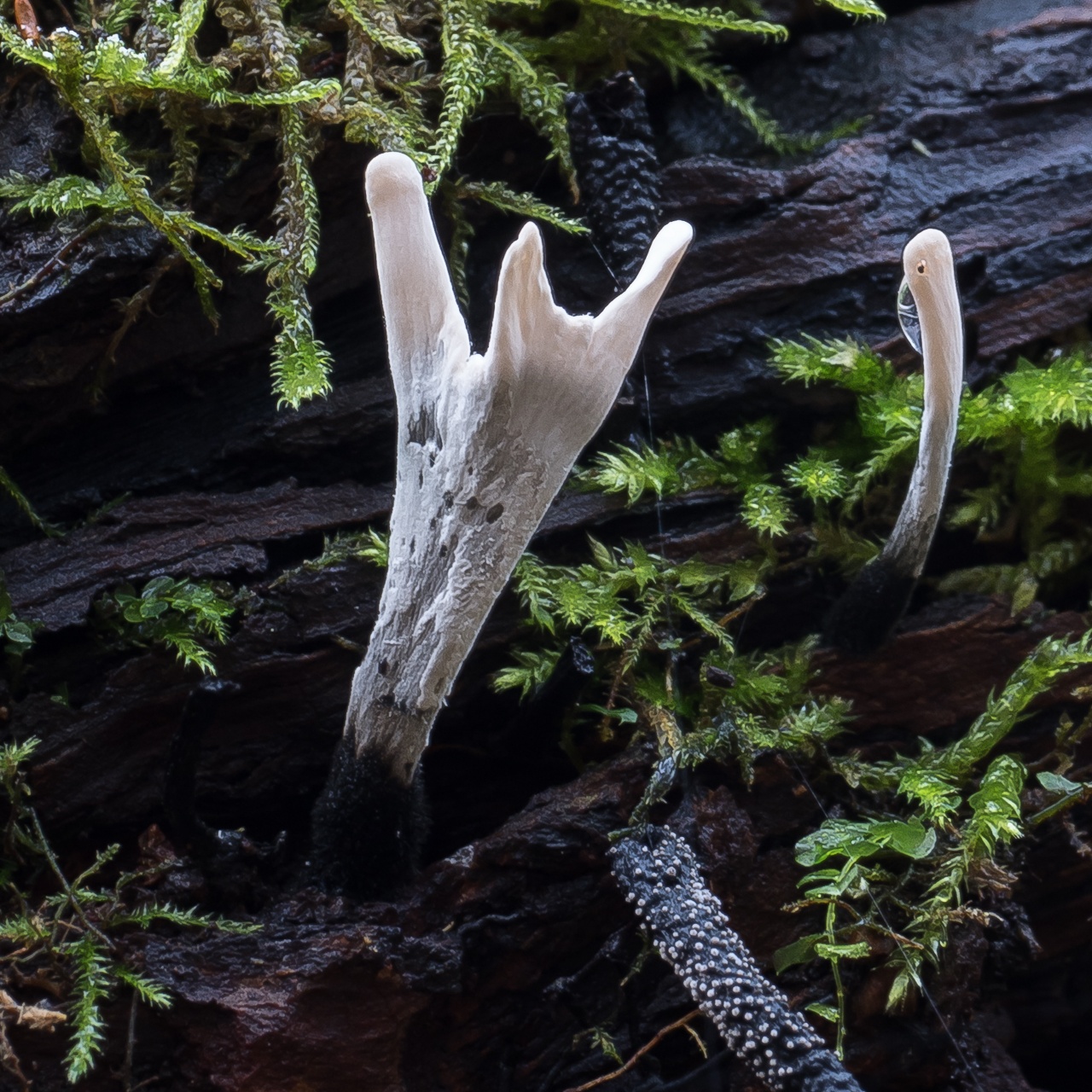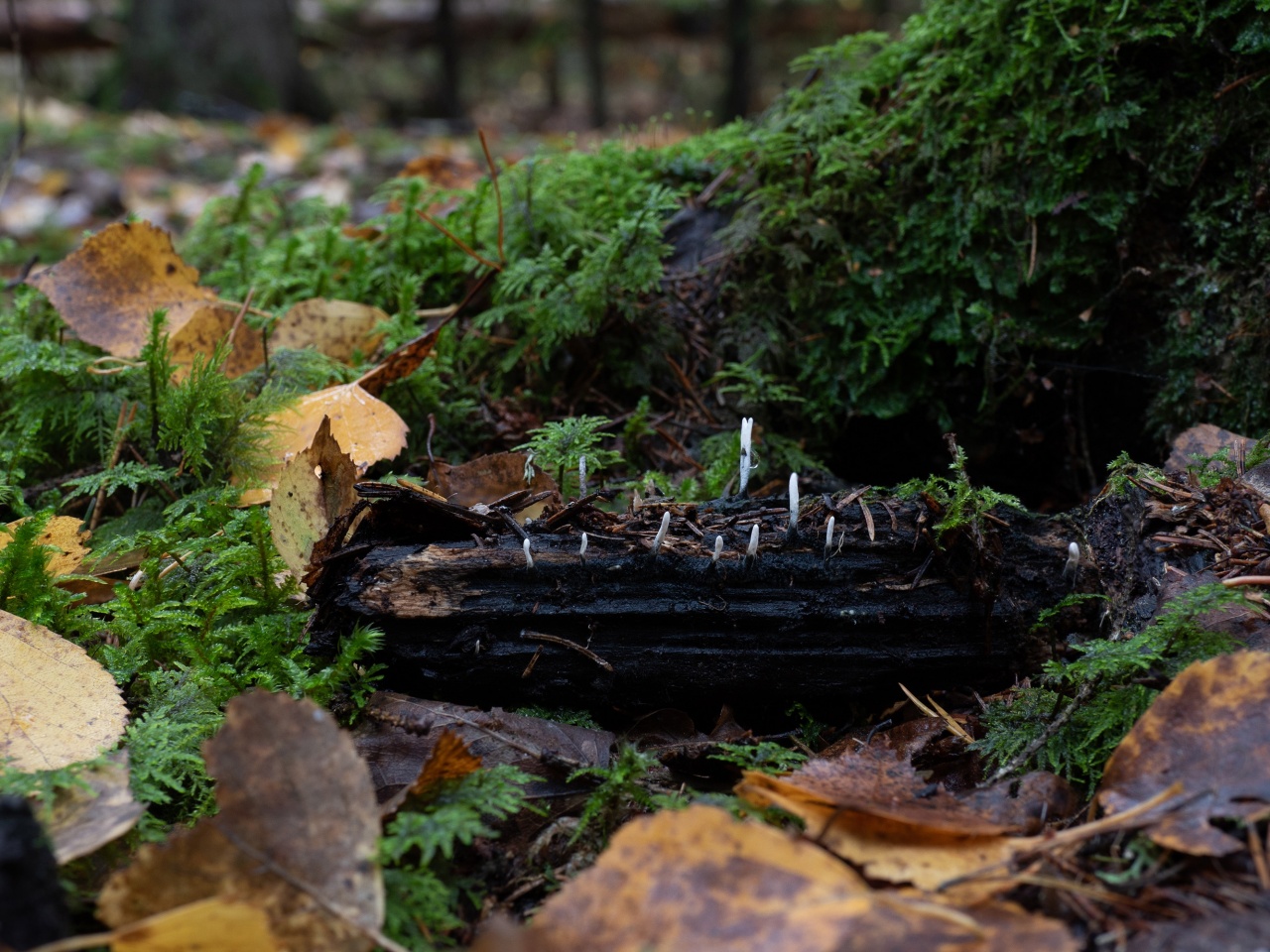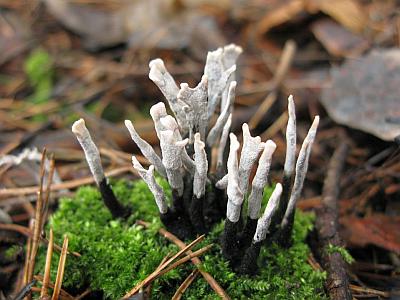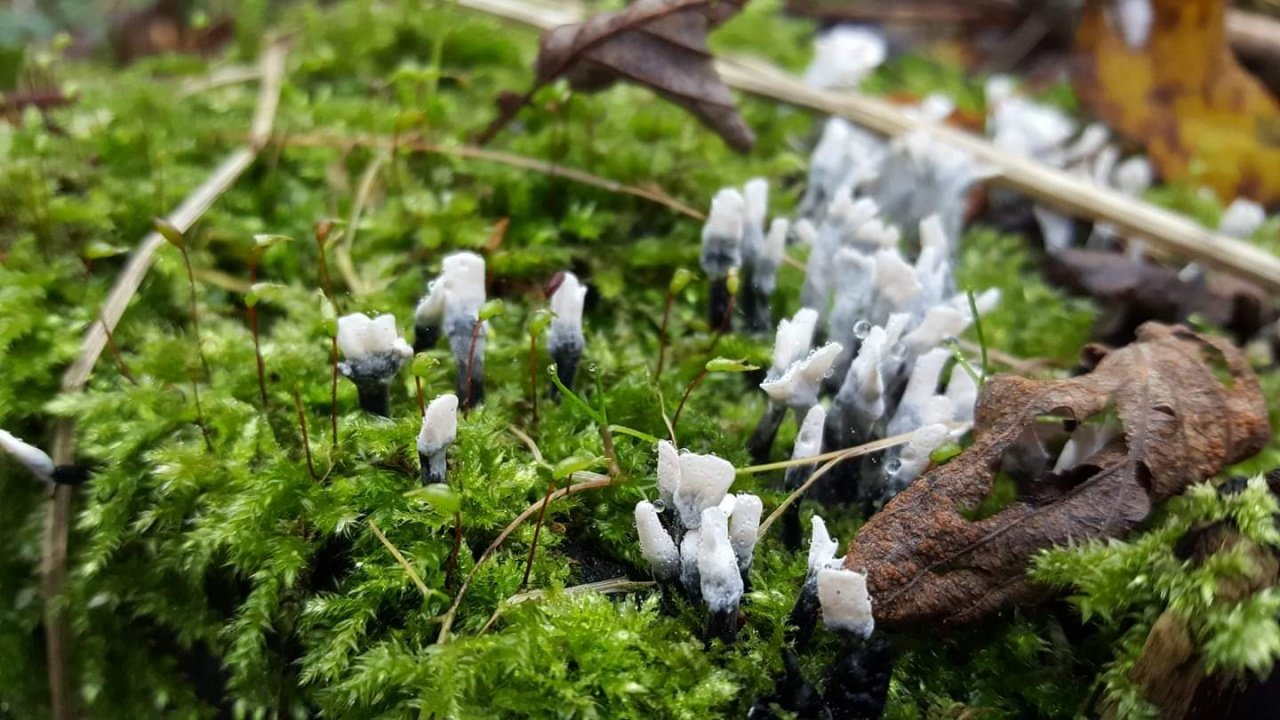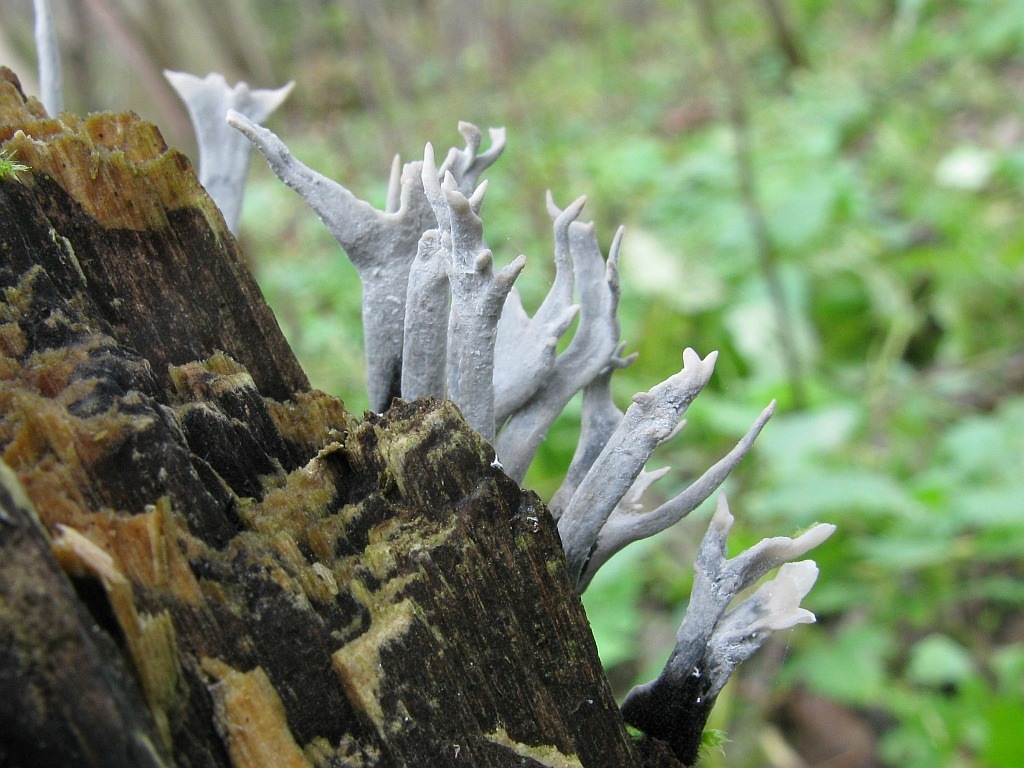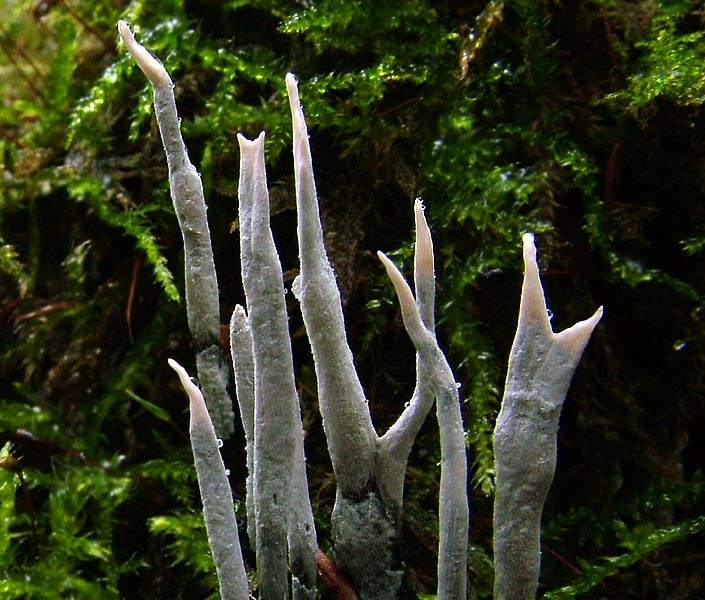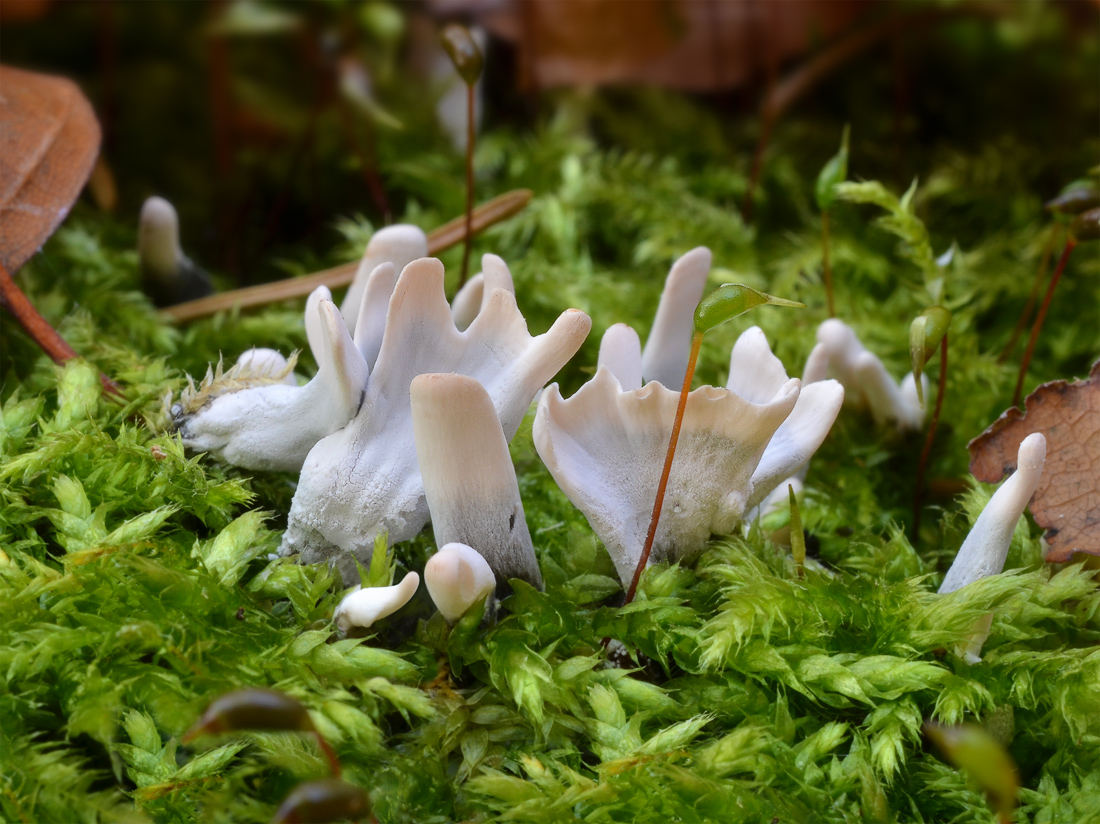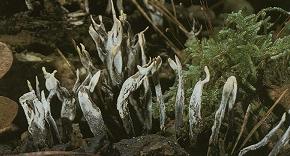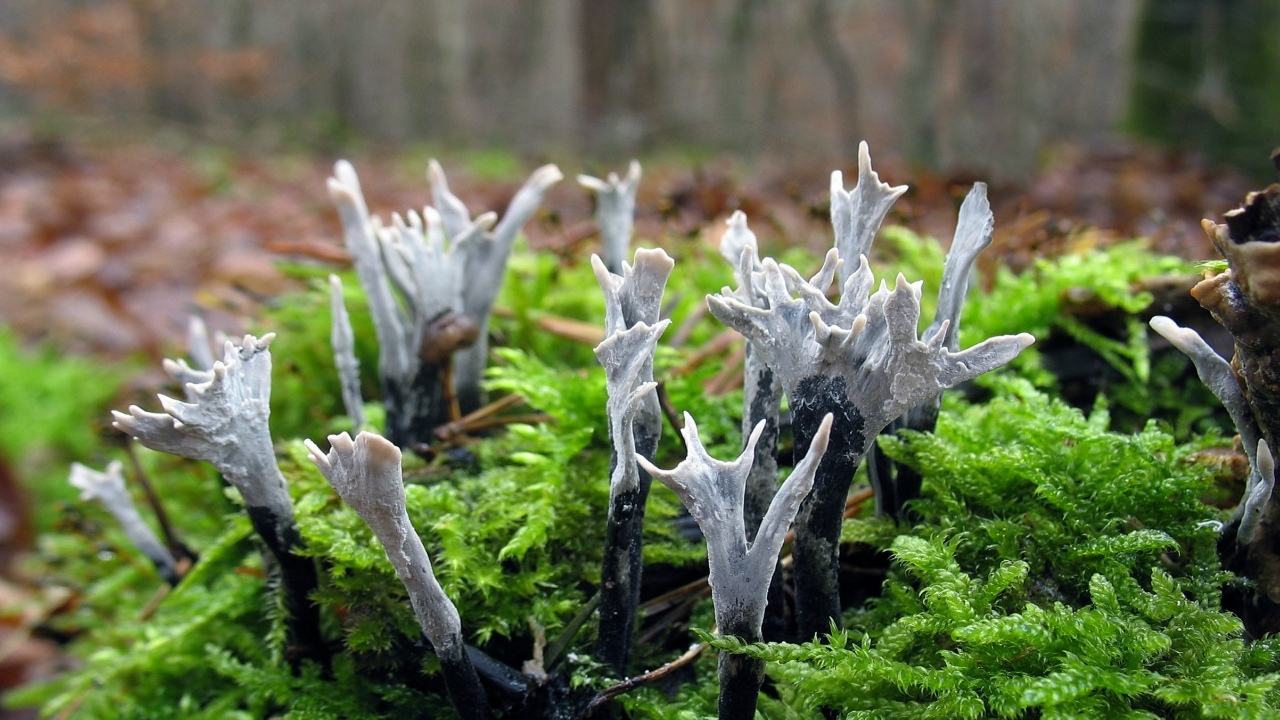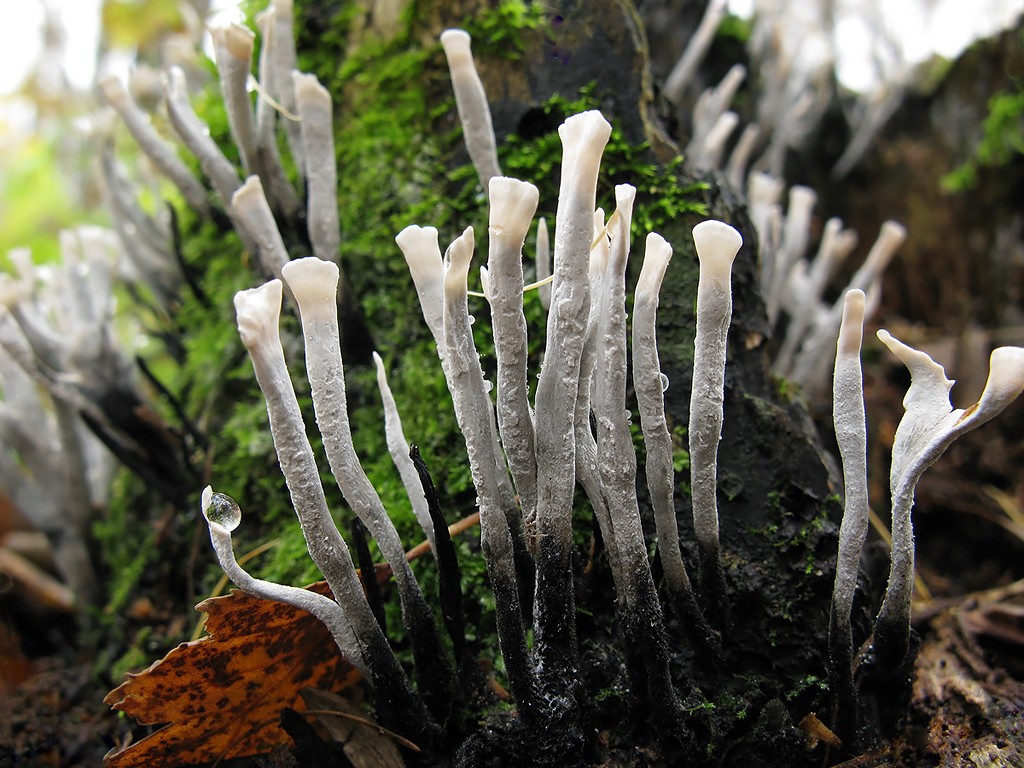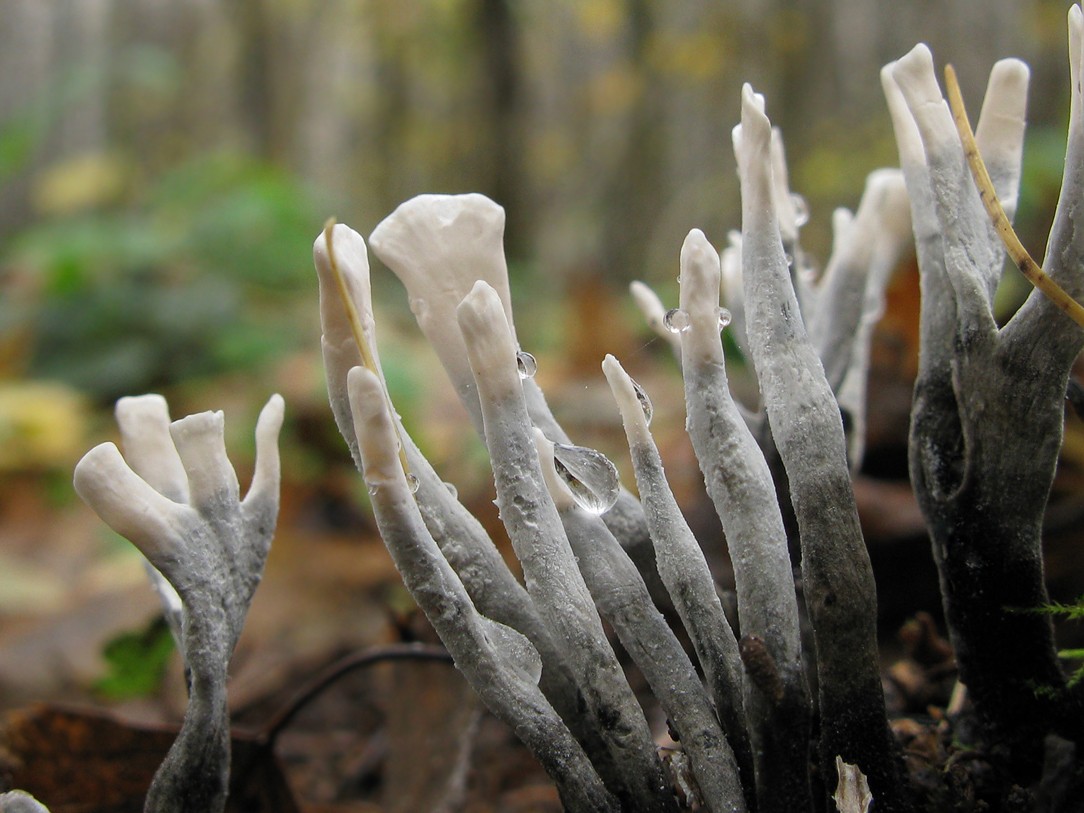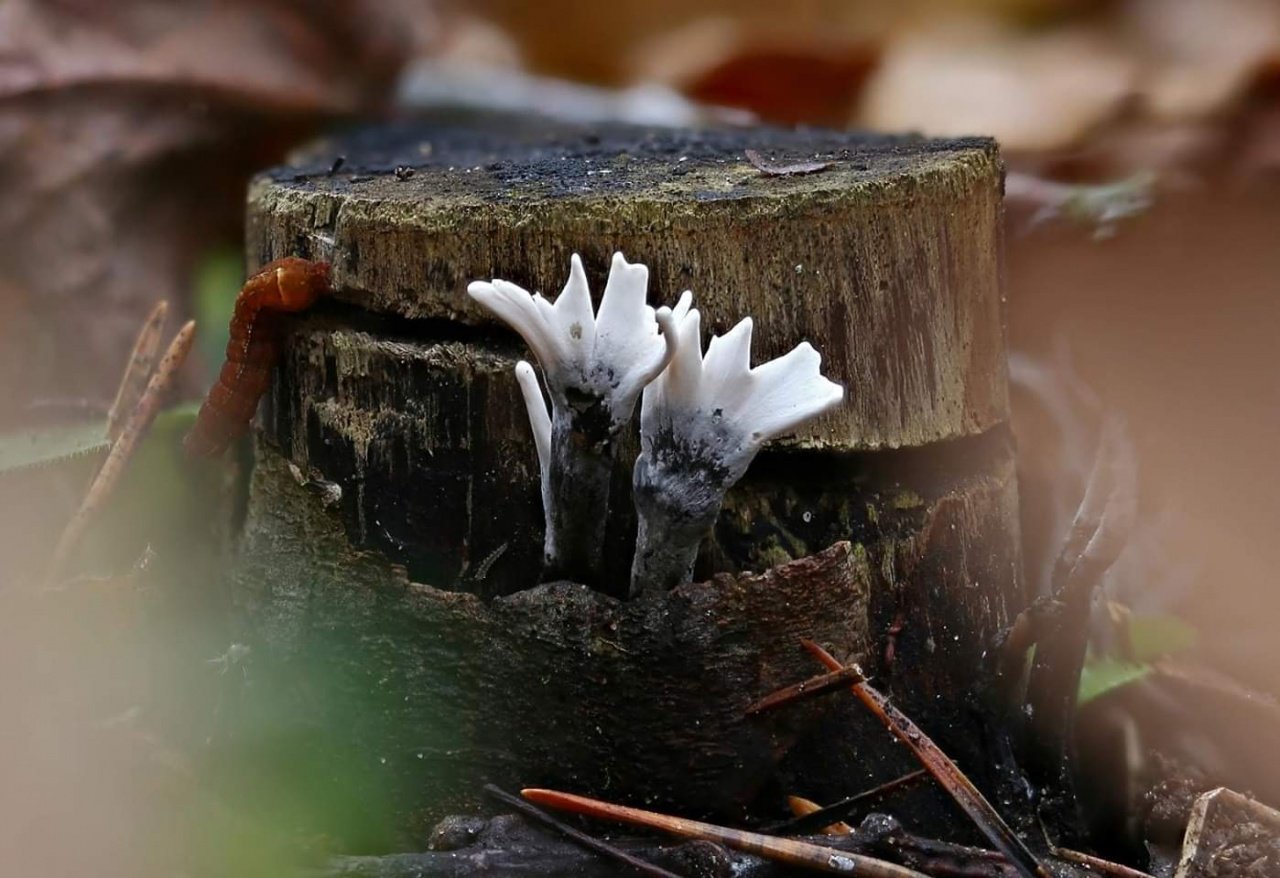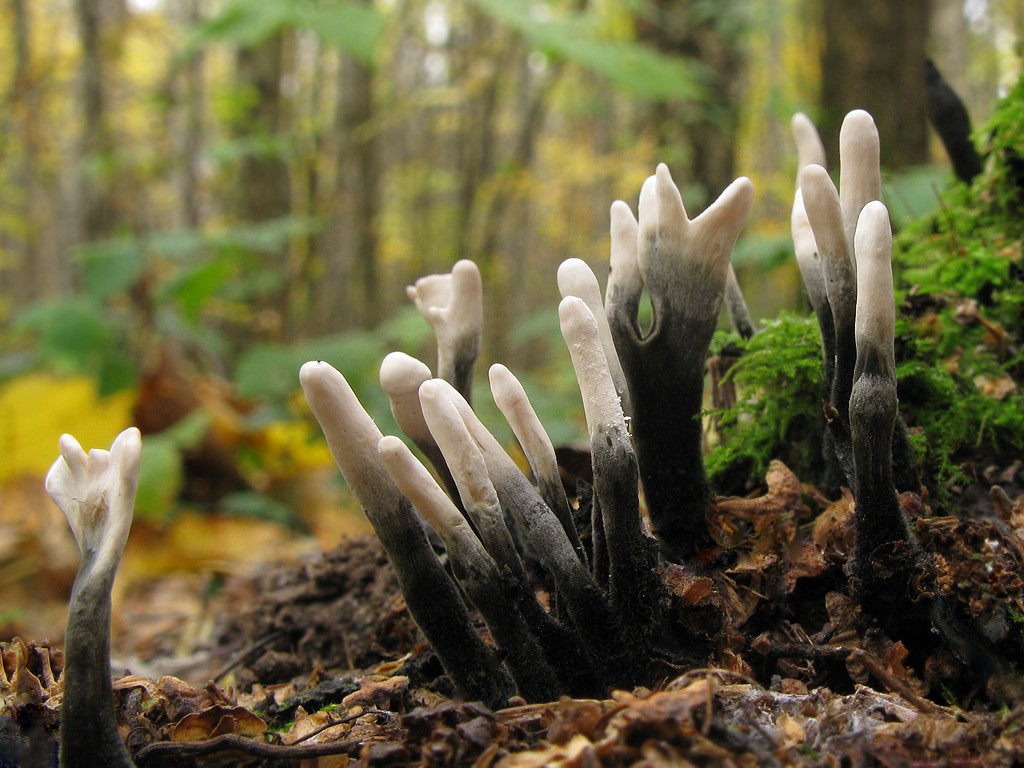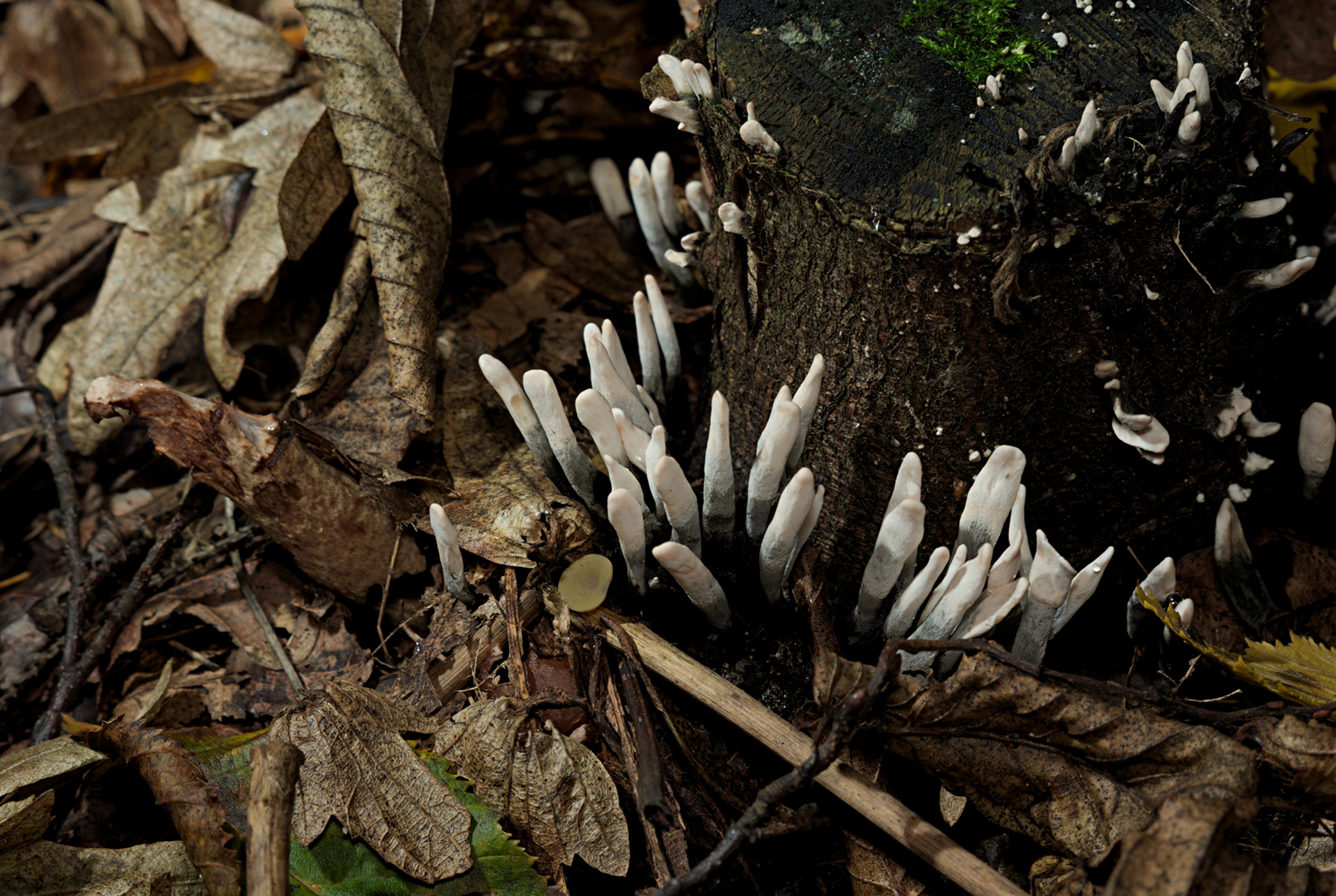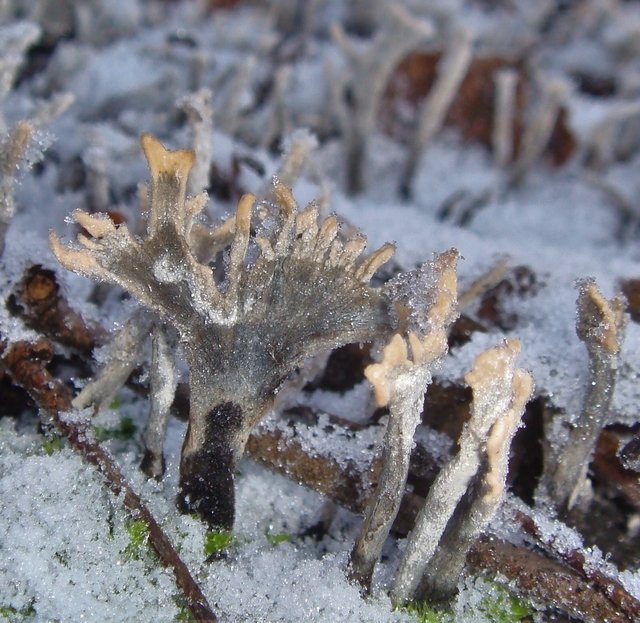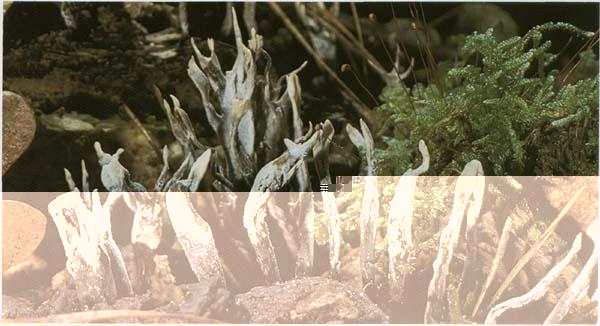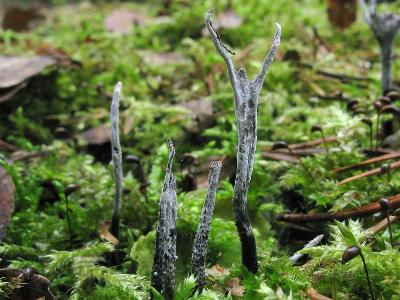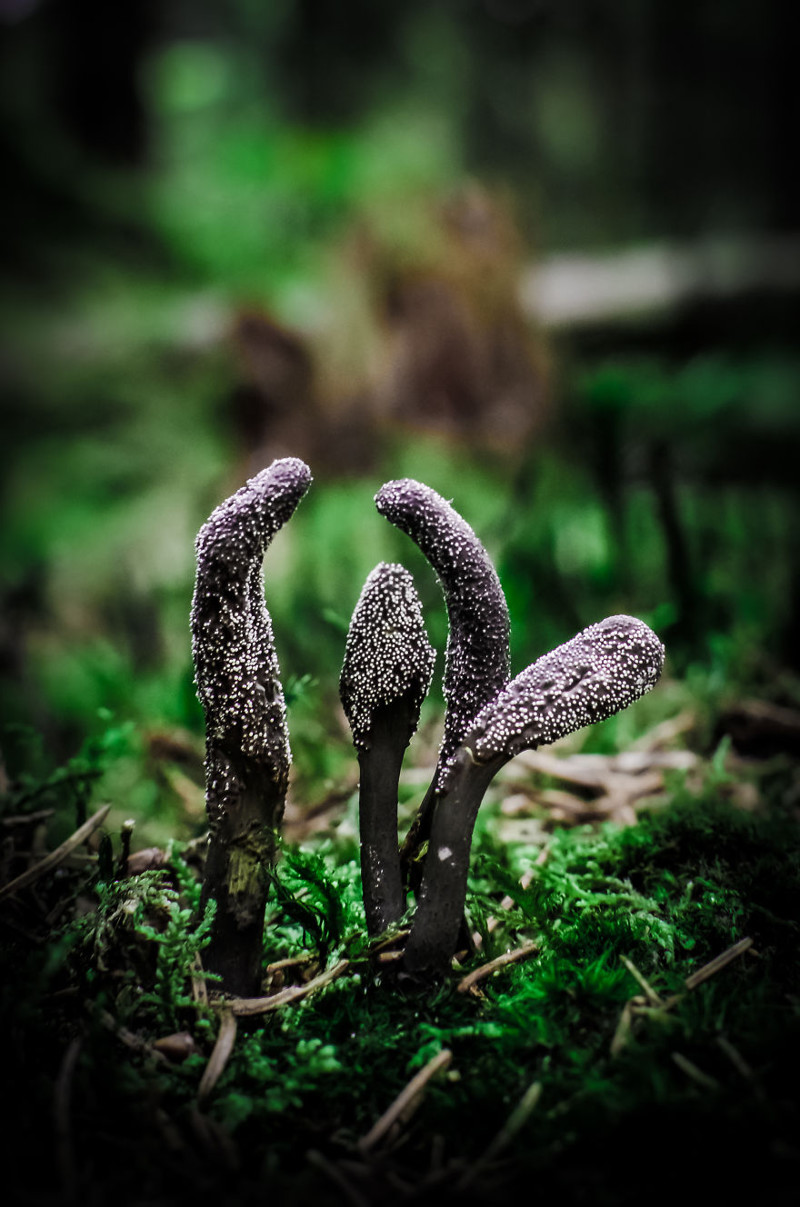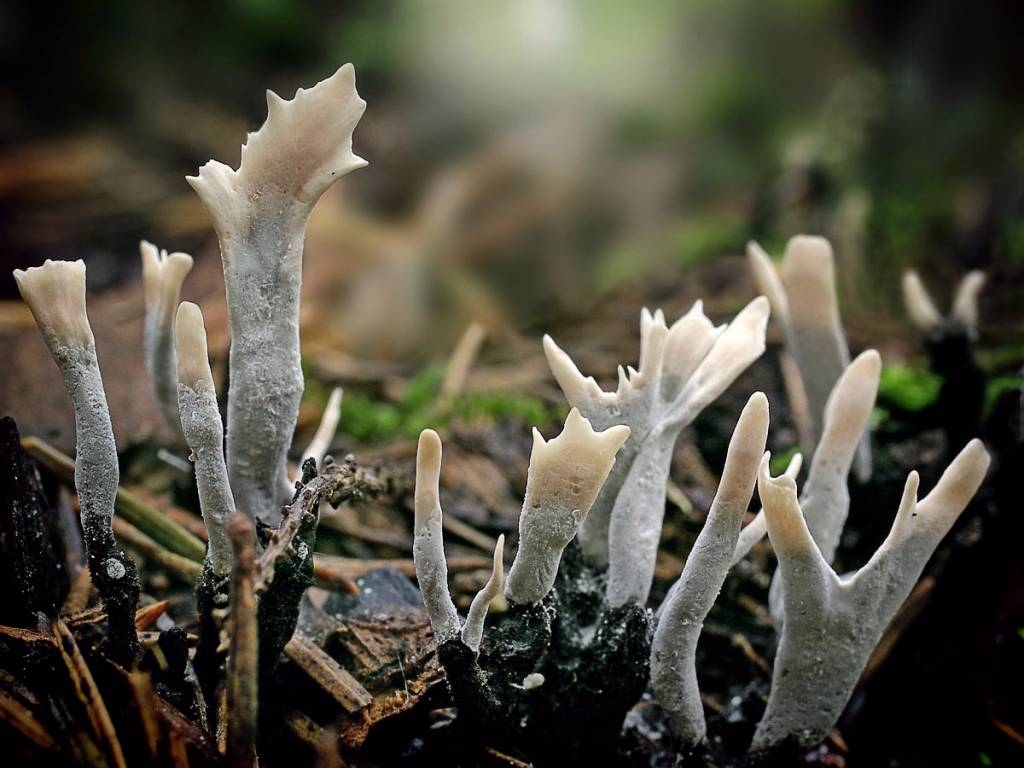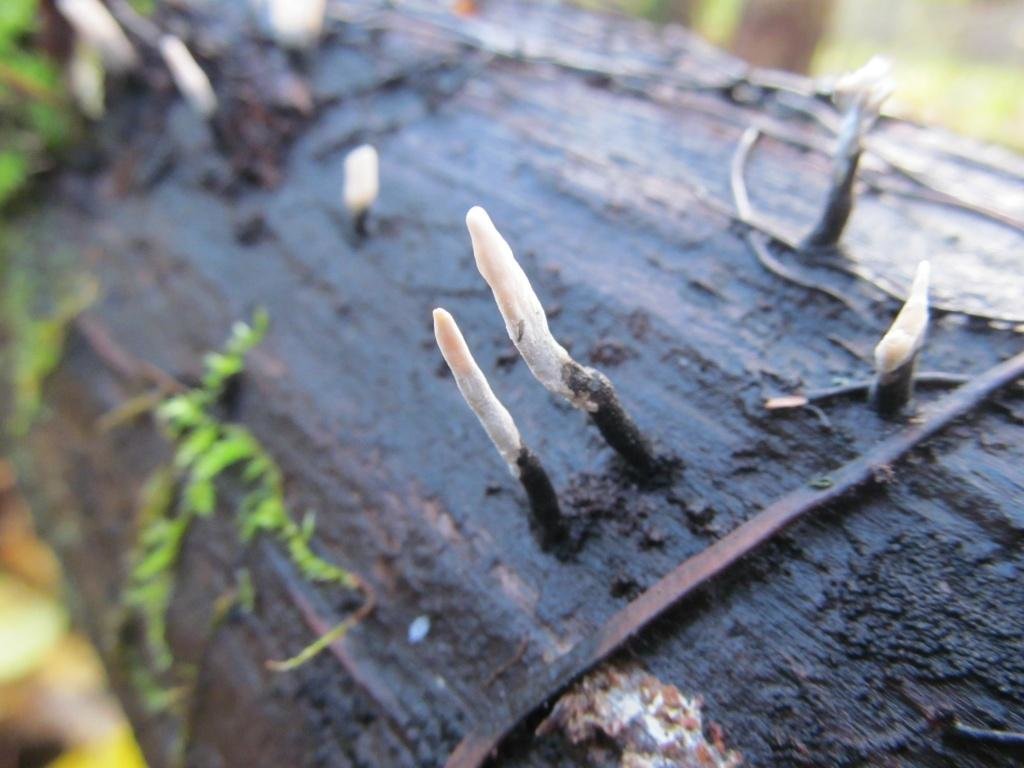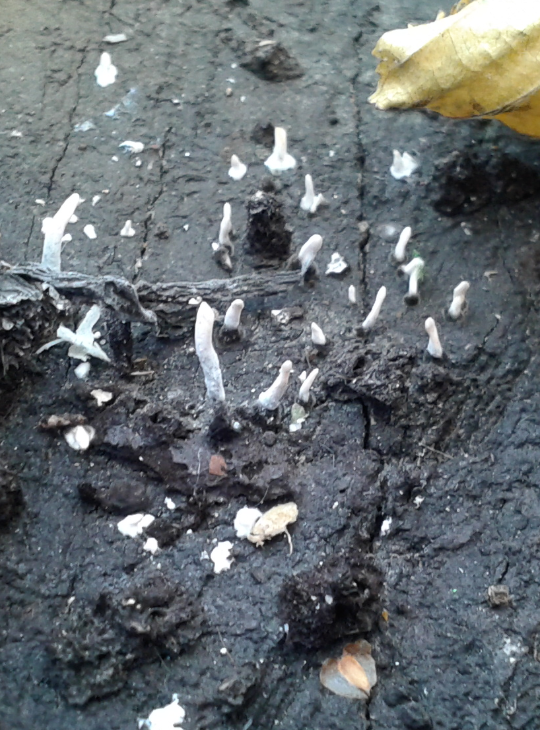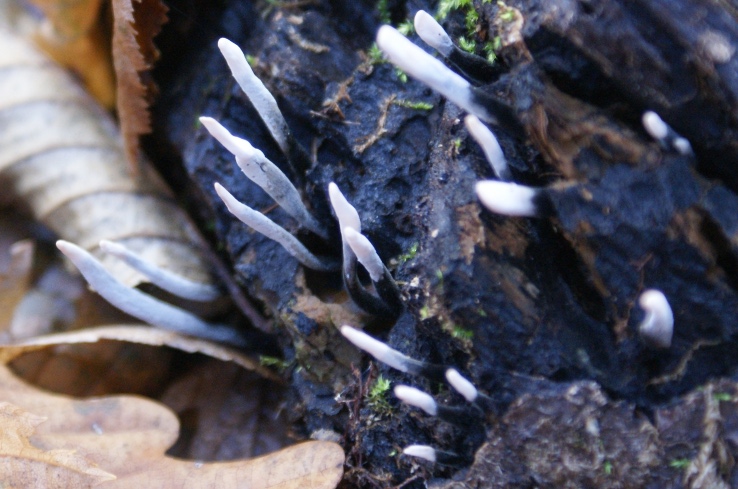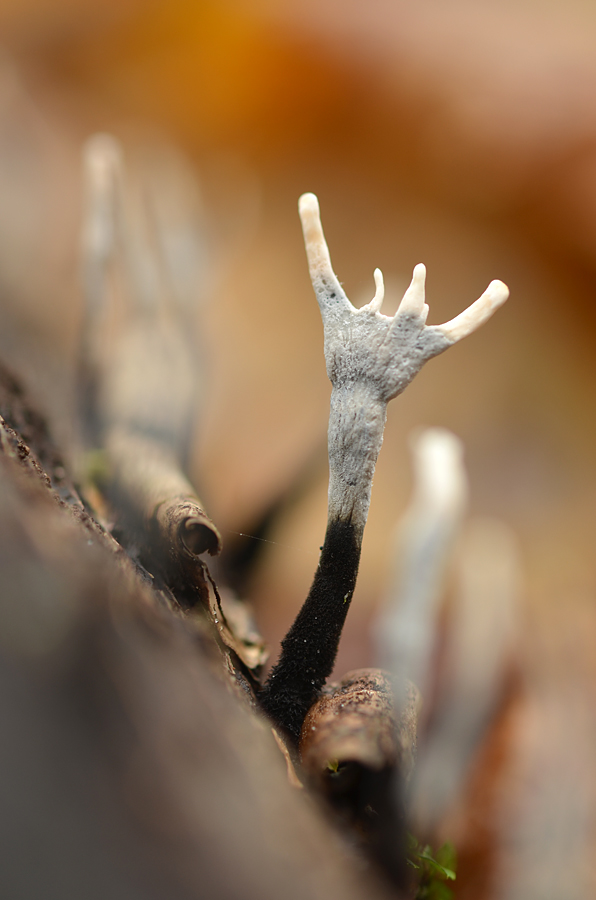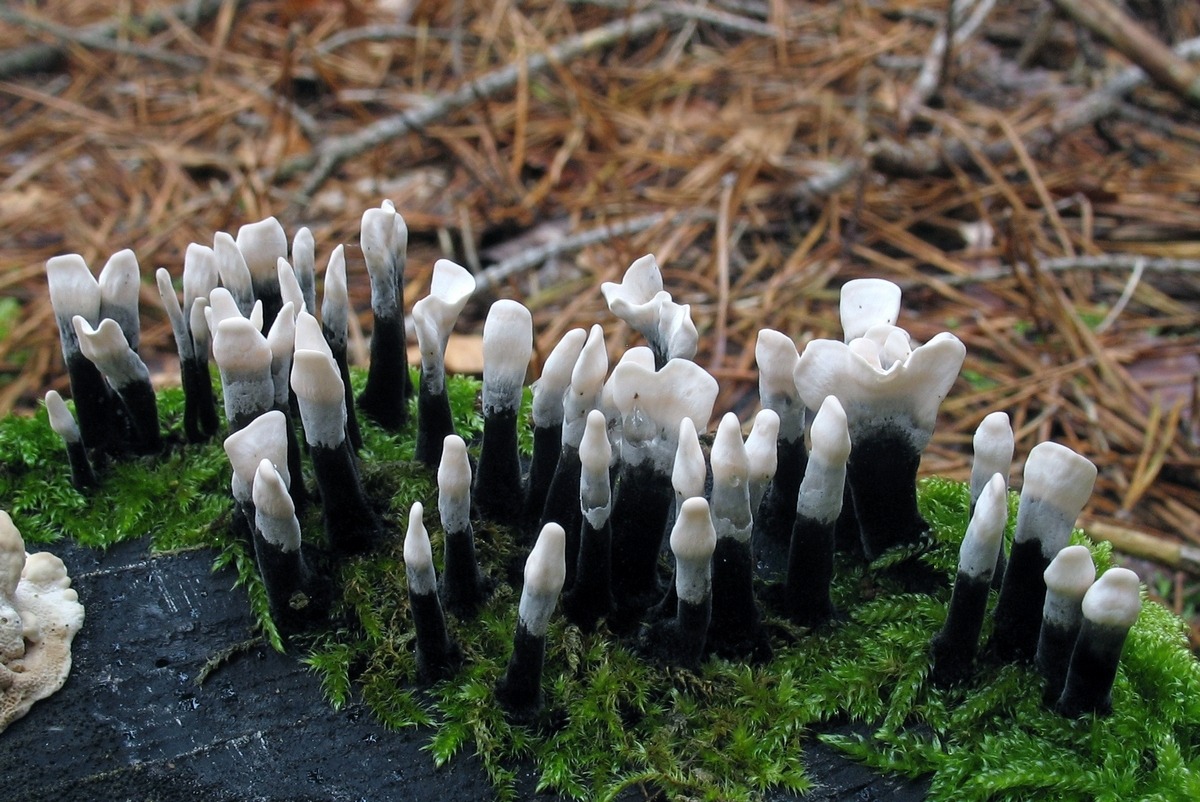Long-legged xilaria what it looks like, where it grows, edibility, how to distinguish it, photo
Long-legged xilaria: description and photo
| Name: | Long-legged xilaria |
| Latin name: | Xylaria longipes |
| View: | Inedible |
| Synonyms: | Xylosphaera longipes, Xilaria long-legged, Xilaria long-legged |
| Systematics: |
|
The mushroom kingdom is diverse and amazing specimens can be found in it. Long-legged xilaria is an original and frightening mushroom, it is not without reason that people call it "dead man's fingers". But there is nothing mystical about it: the unusual elongated shape and dark color with bright ends resemble a human hand sticking out of the ground.
How long-legged xilariae look
The second name of this species is polymorphic. The body does not have an obvious division into a leg and a cap. In height it reaches 8 cm, but in most cases it grows small - up to 3 cm. In diameter it does not exceed 2 cm, the body is formed narrow and elongated.
It has a clavate shape with a slight thickening at the top; it can be mistaken for a tree twig. Young specimens are light gray, with age, the color darkens and turns completely black. Small outgrowths on the ground are hard to see.
Over time, the surface of the fruiting body also changes. It scales and cracks. The spores are small, fusiform.
Allocate the next type of xilaria - varied. It is distinguished by the fact that several processes, hard to the touch and rough, resembling wood, depart simultaneously from one fruiting body. In the middle, the pulp is made of fibers and is covered with white paint. It is quite tough, so it is not eaten.
The young fruiting body is covered with asexual spores of purple, gray or light blue color. Only the whitish ends remain free from spores.
The upper part of the fruiting body is slightly brighter in adulthood. Long-legged xilaria may become covered with warts for some time. Small holes appear in the cap for ejection of spores.
Where long-legged xilariae grow
Refers to saprophytes, therefore it grows on stumps, logs, rotten deciduous trees, twigs. Representatives of this species are even more fond of fragments of maple and beech.
Long-legged xilariae grow in groups, but there are also single specimens. This type of fungus can cause gray rot in plants. In the domestic climate, it grows strongly from May to November. Occurs in forests, less often on forest edges.
The first descriptions of long-legged xilaria are found in the second half of the 1890s. Before that, there was a single mention of the fact that the parishioners of one English church in the cemetery revealed terrible mushrooms. They looked as if the fingers of the dead, black and coiled, were climbing out of the ground. Mushroom shoots were everywhere - on stumps, trees, the ground. A similar performance frightened people so much that they refused to enter the cemetery.
The churchyard was soon closed and abandoned. This view is easy to explain scientifically. Long-legged xilaria grows strongly on stumps, rotten and shabby wood. Can develop at the roots of deciduous trees. They are found all over the world. In some regions, the first long-legged xilariae appear early in the spring.
Is it possible to have long-legged xilariae
Long-legged xilaria is an inedible species. Even after prolonged cooking, the flesh is very tough and difficult to chew.
Mushrooms of this type do not stand out with any taste or smell. During cooking, they lure insects - this should be taken into account if there is a strong desire to conduct an experiment.
In classical medicine, a substance is isolated from the xilaria, which is used to create diuretics.Scientists are planning to use these fruiting bodies for the development of drugs for oncology.
Conclusion
Long-legged xilaria stands out with its original color and shape. At dusk, mushroom shoots can be mistaken for tree branches or gnarled fingers. This type is not toxic, but it is not used in food. In nature, these representatives of the mushroom kingdom perform a special function: they accelerate the decomposition of trees and stumps.
Edible coral-like mushrooms with a white and yellow body
Ungulate horned (Ramaria botrytis).
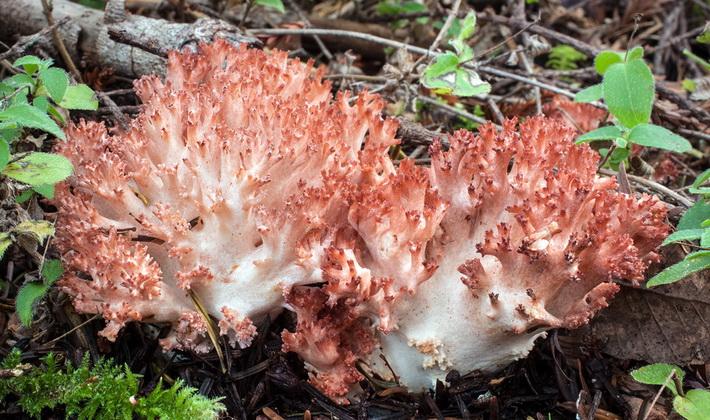
Family: Gomphaceae.
Season: August - September.
Growth: singly and in groups.
Description:

The branches are thick, tapering upwards, their ends are cut off, at first reddish, brown leathery by old age.
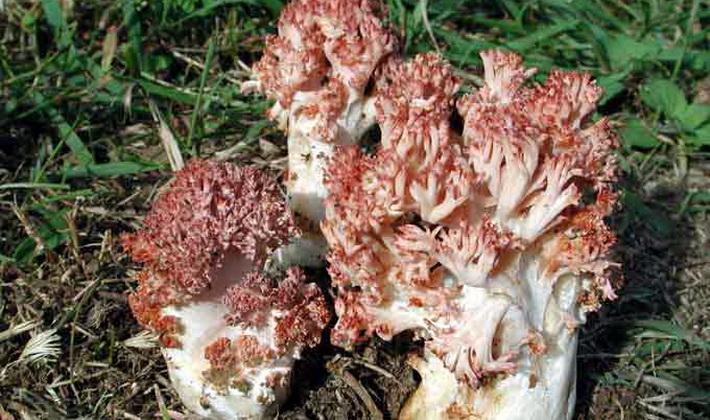
The leg is massive, dense, whitish.
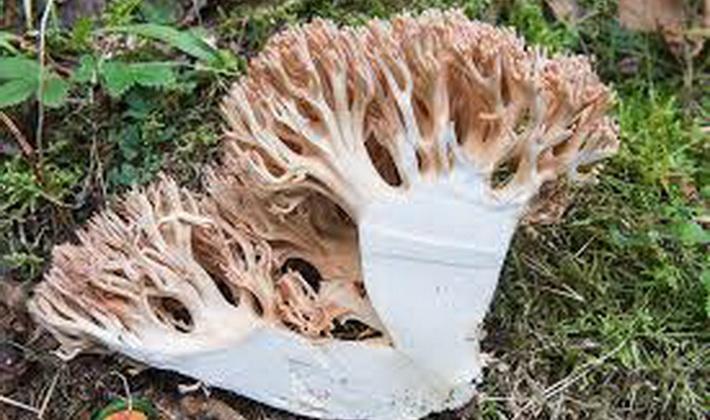
The pulp is brittle, whitish-yellowish, with a pleasant smell and mild taste.
This coral-like mushroom is edible at a young age. Requires preliminary boiling.
Ecology and distribution:
Grows in deciduous and mixed forests, especially near beeches. It is rare.
Clavulina cristata
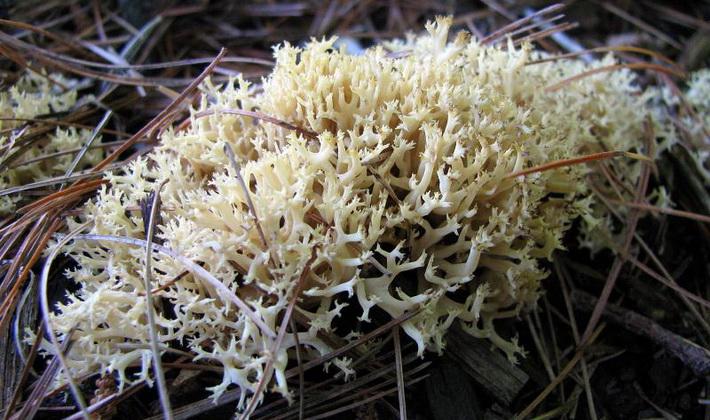
Family: Clavulinaceae
Season: mid July - October
Growth: singly and in groups
Description:

The branches are pointed, with lobed flat comb tops. The branches of this mushroom are like white or cream-colored corals.
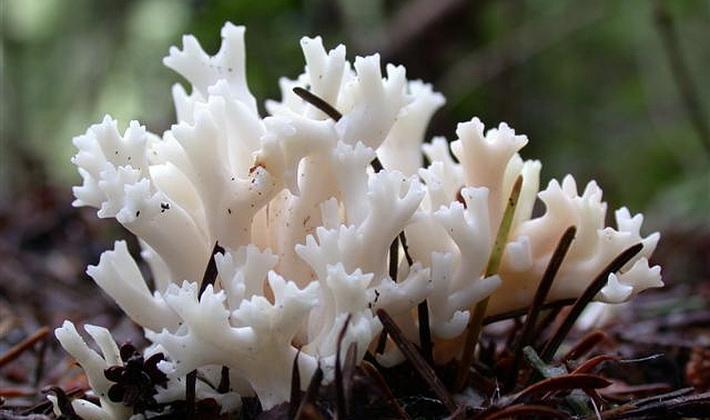
The fruit body is bushy, branched; the base forms a short, dense stalk.

The pulp is fragile, light, without a special smell, sometimes with a bitter aftertaste.
Poor quality edible mushroom.
Ecology and distribution:
It grows in deciduous (with birch), more often coniferous and mixed forests, on litter, on soil, in grass.
Curly sparassis (Sparassis crispa).
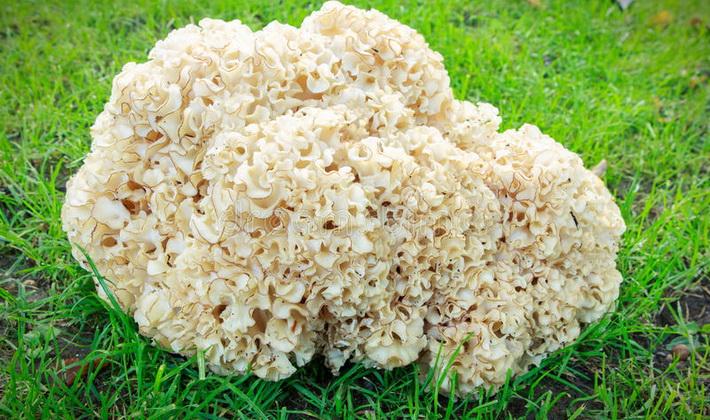
Family: Sparassidaceae.
Season: August - October.
Growth: single.
Description:
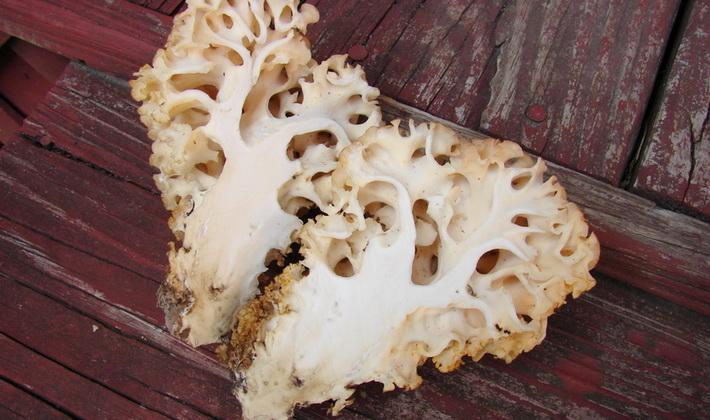
The pulp is brittle, white, with a nutty flavor. The leg is thick, deeply buried in the ground, whitish or yellowish.
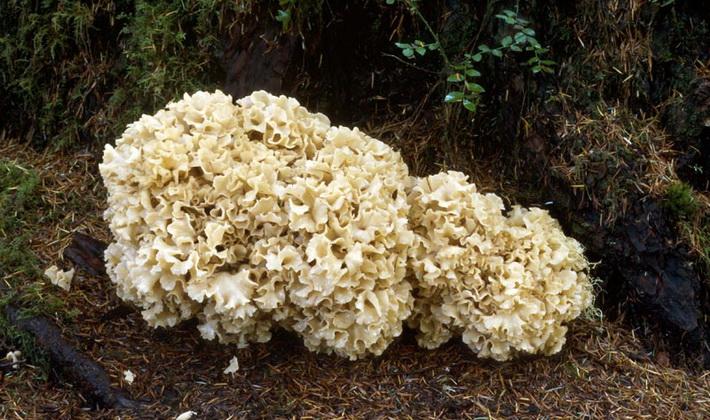
The fruit body of this fungus is like a yellow or white coral, irregularly spherical in shape, consists of many branched wavy plates. One of the surfaces of the plates is spore-bearing.

The leg is thick, deeply buried, whitish or yellowish.
Ecology and distribution:
It grows on roots, at the base of trunks, less often on fresh stumps of coniferous trees (mainly pine) in old-growth coniferous and coniferous-deciduous forests.
Chemical compounds
A variety of chemical compounds with in vitro properties have been identified in this fungus. The compounds xylarial A and B both have moderate cytotoxic activity against the human hepatocellular carcinoma cell line Hep G2. The pyrone derivative compounds named xylarone and 8,9-dehydroxylarone also have cytotoxic activity. Several cytochalasins, compounds that bind to actin in muscle tissue, have been found in the fungus.X. hypoxylon also contains a carbohydrate-binding protein, a lectin, with a unique sugar specificity, and which has potent anti-tumor effects in various tumor cell lines.
Long-legged xilaria
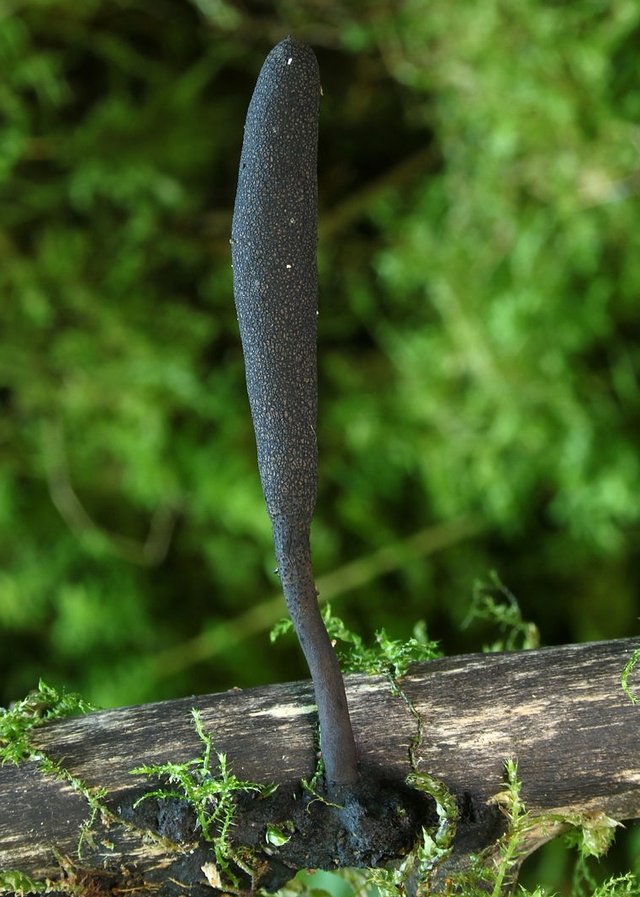
Xylosphaera longipes
Long-legged Xilaria in English-speaking countries is called "dead moll's fingers" - "Fingers of a dead street girl", "Fingers of a dead prostitute." Creepy name, but it is the essence of the difference between long-legged Xilaria and Diverse Xilaria, which is called "Dead man's fingers": long-legged is thinner than diversified, and it often has a thin leg. The second popular name for Xilaria long-legged, in French, is pénis de bois mort, "a dead wooden penis."
Description
Fruit body: 2-8 centimeters in height and up to 2 cm in diameter, club-shaped, with a rounded end. In youth from gray to brown, with age becomes completely black. The surface of the fruiting body, as the fungus matures, becomes scaly and cracked. The leg is proportional to the length, however, it may be short or completely absent.
Spores 13-15 x 5-7 μm, smooth, fusiform, with spiral germinal fissures.
Ecology
Saprophyte on decaying deciduous logs, fallen trees, stumps and branches, especially loves beech and maple fragments. They grow singly and in groups, in forests, sometimes at forest edges. Causes soft rot.
Similar species
Diverse xylaria (Xylaria polymorpha) is somewhat larger and "thicker", but a microscope is needed to distinguish these species in controversial cases. While X. longipes has spores ranging in size from 12 to 16 by 5-7 micrometers (μm), the spores of X.polymorpha is measured from 20 to 32 by 5-9 microns
Other information about the mushroom
Scientists have discovered the amazing ability of this and another species of fungus (physisporinus vitreus) to positively influence the quality of wood. In particular, Professor Francis Schwarz of the Swiss Federal Laboratory for Materials Science and Technology Empa has invented a method of wood processing that changes the acoustic properties of natural materials.
The discovery is based on the use of special mushrooms and is able to bring modern violins closer to the sound of the famous works of Antonio Stradivari (writes about this in Science Daily).
Description
Fruit bodies (ascocarps) are cylindrical or flattened with dimensions of 3–8 centimetres (1.2–3.1 in) tall × 2–8 mm thick. The erect ascocarps are often twisted or bent, and typically sparsely branched, often in a shape resembling a stag's antlers. Specimens found earlier in the season, in spring, may be covered completely in asexual spores (conidia), which manifests itself as a white to grayish powdery deposit. Later in the season, mature ascocarps are charcoal-black, and have minute pimple-like bumps called perithecia on the surface. These are minute rounded spore bearing structures with tiny holes, or ostioles, for the release of sexual spores (ascospores). The perithecia are embedded in the flesh of the ascocarp, the stroma, which is tough, elastic, and white. Within the perithecia, the asci are 100 × 8 µm.
Ascospores are kidney-shaped, black, and smooth, with dimensions of 10–14 × 4–6 µm. The asexual spores (mitospores) are ellipsoid in shape, smooth, and hyaline.
References
- ^ Sundberg W, Bessette A (1987). Mushrooms: A Quick Reference Guide to Mushrooms of North America (Macmillan Field Guides)... New York: Collier Books. p. 10.ISBN 0-02-063690-3.
- Linnaeus C. (1745). Flora svecica exhibens plantas per regnum Sueciae crescentes... Vol. 2. Stockholm: Salvii.
- Linnaeus C. (1753). Species Plantarum, exhibentes plantas rites cognitus ad genera relatas cum differentiis specificis, nominibus trivialibus, synonymis selectis, locis natalibus, secundum systema sexuale digestas... Vol. II. Stockholm: Salvii.
- Gu W, Ding H. (2008). “Two new tetralone derivatives from the culture of Xylaria hypoxylon AT-028. " Chinese Chemical Letters 19(11): 1323–26.
- Espada A, Rivera Sagredo A, de la Fuente JM, Hueso Rodriguez JA, Elson SW. (1997). "New cytochalasins from the fungus Xylaria hypoxylon.» Tetrahedron 53(18): 6485–92.
Evaluation of taste, medicinal properties, benefits and possible harm
Known in medicine, but not officially applied. When studying, scientists found diuretics in the composition of the fruiting body. And also, it was possible to extract from the fibers of the fungus a substance that resists the reproduction of cancer cells and the spread of HIV throughout the body. The most valuable substances are:
- mannitol;
- polysaccharides.
Curious! In the Vedas, there is a mention of this terrible mushroom. Cases are described when ancient women ate it, thereby increasing lactation after childbirth.
The fungus is not poisonous, despite its intimidating outer shell. It is not used in cooking because of its tough pulp. It is considered inedible because it has a bland taste. Young mushrooms have no smell. The old ones smell like rot.

